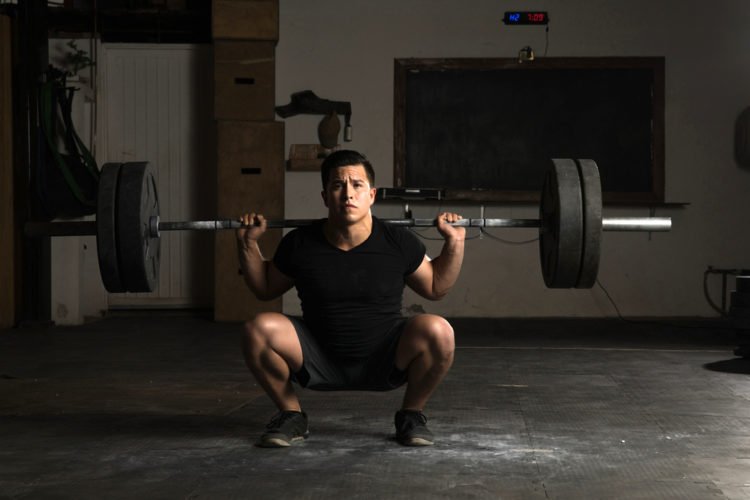When programming exercises for development of athletic skills like acceleration, maximal speed, and change of direction, coaches will utilize multiple strategies to support success. One strategy in particular that tends to come with a high interest for coaches and athletes is exercise selection. As in, which exercises are best to program for specific adaptations in various populations.
This topic is incredibly complex to begin with, especially when you factor in the individuality of athletes, which is why it’s great to see more and more research explore the topic and compare different exercises and training methodologies for facilitating desired skill responses.
In a recent study published in the Journal of Strength & Conditioning Research, authors compared a bilateral exercise (the back squat) versus a unilateral exercise (step-up), then suggested their effects on sprint speed and change of direction. (1)

The Participants and Structure
For this study, authors had 33 rugby players split into three separate groups. The three separate groups were divided into a bilateral training group that performed squats as their main compound movement, unilateral group that performed step-ups as their main compound, and a comparison group that continued training as normal.
Authors had the 33 athletes proceed through a three phase long training intervention that consisted of a 6-week familiarization phase, an 8-week intervention phase, and 3-week maintenance phase. Subjects had their 1-RMs tested for the back squat and step-up, along with their 20-m sprint acceleration times, and change of direction speed following the familiarization phase, twice during the intervention phase, and once during the maintenance phase.
The rationale behind structuring the training and testing protocols this way was to mimic a traditional in-season structure for these athletes. The 8-week long program accounted for loading per the volume-load equation (sets + reps x % 1-RM), which was based on an individual athlete’s initial results recorded at baseline, midline, and the end of the testing phases.

Results and Suggestions
From baseline to the end of the training intervention (week 9), athletes in both the squat and step-up group saw improvements in both of their lift’s 1-RM strengths. So the bilateral group that performed squats improved both their squat and step-up 1-RM strength, despite not training the other lift throughout the full 8-week training intervention, and this was consistent for the unilateral step-up group as well.
When it came to 5-m and 20-m sprint acceleration, both groups saw similar improvements, which authors speculate could have been due to the relationship of the strength increase. However, they point out that top end sprint speed — while often related to strength — isn’t always directly transferrable. (2)
For change of direction the story was slightly different, authors noted that both groups saw improvements, but the bilateral group saw greater improvements compared to the unilateral and control group. Why was this? Authors, suggest that the additional eccentric loading required in the back squat could have played a role in providing a more novel stimulus for change of direction adaptation improvements.
The skill of changing direction is a highly concentric activity, which explains why increasing strength for both groups caused a slight increase for this skill. However, when shifting directions, there is a slight period of eccentric loading required before the propulsion of the next step, thus suggesting why the back squat (as mentioned above) could provided a better stimulus.
Practical Takeaways
Both lower body unilateral and bilateral movements are suggested to be important to program for improving strength, sprint speed, and change of direction. However, there may be discrepancies between which exercise provides the most benefit for specific adaptations.
For example, improvement in sprint acceleration and change of direction require slightly different neuromuscular adaptations, so exercise selection that caters to mechanistic characteristics for certain skill is important to consider. So as opposed to simply programming exercises that “look” like a skill wanting to be acquired, consider the mechanisms that propel the skill’s success, then seek exercises that can best provide a stimulus for their development.
This study provided some awesome insights into unilateral and bilateral training for various training adaptations and which may be best from a programming point of view, but it’s also left a lot of food for thought. When thinking about adaptations and skill acquisition, consider every aspect that’s required for successful execution — not just what looks most similar.
References
1. Appleby, B., Cormack, S., & Newton, R. (2020). Unilateral and Bilateral Lower-Body Resistance Training Does not Transfer Equally to Sprint and Change of Direction Performance. Journal Of Strength And Conditioning Research, 34(1), 54-64. doi: 10.1519/jsc.0000000000003035
2. Delecluse, C. (1997). Influence of Strength Training on Sprint Running Performance. Sports Medicine, 24(3), 147-156. doi: 10.2165/00007256-199724030-00001
Feature image from antoniodiaz/Shutterstock